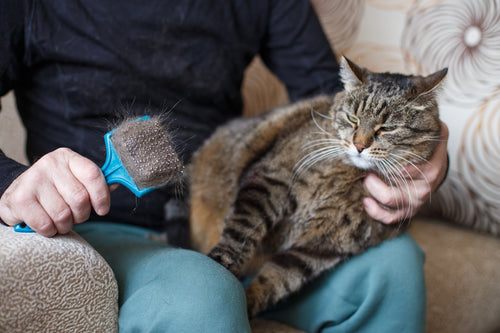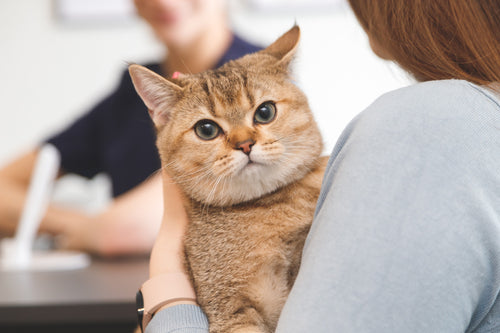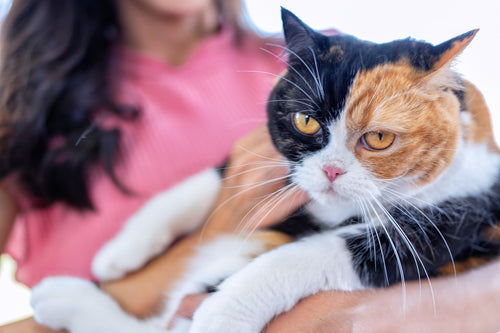Good nutrition is the cornerstone of good health, and when it comes to pet health, the same rule applies. In the vast landscape of pet care, the concept of 'bowl building' has emerged as a comprehensive approach to ensure that your pet's diet is fulfilling, balanced, and tailored to their individual needs.
Whether you’re a new pet parent or a seasoned one looking to elevate your pet's nutrition, our Bowl Building 101 is your guide to creating a custom meal plan that will have your pet fed, healthy, and licking their bowl clean.
The Imperative of Pet Nutrition
The health of our pets is directly linked to their diet. Proper nutrition plays a key role in maintaining a strong immune system, promoting healthy growth and development, and contributing to their overall longevity.
As pet care continues to evolve, the shift towards personalized dietary approaches such as 'bowl building' is gaining traction. This method allows pet owners to take control of the ingredients in their pet's food, ensuring that each meal provides the necessary nutrients in optimal quantities.
Understanding Bowl Building
Bowl building is more than just filling up a pet dish. It is a strategic combination of ingredients and supplements to create a complete and balanced meal. The goal is to establish a consistent and nutritious diet, much like you would aim for your own meals. This approach considers the nutritional value of each component and how they interact to support your pet’s wellness.
Why Bowl Building?
The pet food market is diverse, offering a wide array of options that may not always align with your pet's specific needs. By assuming the role of a 'nutrition architect', you can tailor their diet to manage weight, energy levels, and even medical conditions, bringing a new level of intent to you and your pet’s daily routines.
Benefits of Bowl Building
Customization
Bowl building allows you to cater to your pet's individual dietary needs, such as age, breed, weight, and activity level.
Transparency
By handpicking their food, you can ensure that you're incorporating premium quality food (free from harmful additives or fillers) that your pet deserves.
Variety
Adding variety to your pet’s diet not only prevents boredom but also provides them with a wide range of essential nutrients.
Control
As the primary caregiver, you have full control over what goes into your pet's bowl, making it easier to monitor their intake and make adjustments as needed.
Bonding
Preparing meals for your pet can be a bonding experience, strengthening the relationship between you and your furry companion.
Who Should Consider Bowl Building?
Bowl building is suitable for pet owners who are committed to providing their pets with the best nutrition possible. It may be particularly beneficial for pets with dietary restrictions, allergies, or sensitivities, as well as those with medical conditions that require a specific diet.

Traditional Pet Foods vs. Bowl Building
While traditional pet foods may provide a convenient and quick option, they are not always tailored to your pet's specific needs.
Canned Food vs. Bowl Building
Canned dog food is highly processed and often contains a high percentage of water, making it less nutrient-dense than fresh food. With bowl building, pet owners have the option to include fresh, whole ingredients that are free from preservatives and additives.
Dry Food vs. Bowl Building
Dry food is convenient and has a longer shelf life, but it may contain fillers and artificial ingredients that are not beneficial for your pet's health. With bowl building, you have the flexibility to choose whole, natural ingredients that provide optimal nutrition.
Raw Food vs. Bowl Building
While raw food and a raw food diet have gained popularity in recent years, it is important to note that raw foods may pose a risk of bacterial contamination and require careful handling. Bowl building offers a safer alternative to raw diets by allowing you to control the quality and safety of each ingredient.
Impacts of Poor Nutrition
Inadequate nutrition can lead to a wide range of health issues for your pet, including obesity, nutrient deficiencies, and chronic diseases. These conditions can have detrimental effects on their quality of life and may even shorten their lifespan.
Here's a list of some impacts of poor nutrition on your pet:
Lack of Energy and Vitality
Just like humans, pets require a balanced diet to fuel their bodies and stay active. Poor nutrition can lead to lethargy and a lack of stamina in your pet, hindering their ability to engage in physical activities.
Skin Problems
A poor diet can result in skin issues for your pet, such as dryness, itchiness, or excessive shedding. These problems not only cause discomfort but can also be a sign of nutrient deficiencies.
Digestive Issues
An imbalanced diet, lacking in necessary nutrients and fiber, can lead to digestive problems such as constipation or diarrhea. This can affect your pet's overall well-being and may even require medical intervention.
Behavioral Changes
A poor diet can also have an impact on your cat or dog's behavior, causing irritability, anxiety, and even aggression.
Poor Coat Health
A shiny and lustrous coat is a sign of good health in pets. However, without proper nutrition, your pet may experience dry, dull, or brittle fur.
Weakened Immune System
Just like humans, pets require a strong immune system to fight off illnesses. A lack of essential nutrients can weaken their immune response and make them more susceptible to infections.
Joint Pain and Stiffness
Inadequate nutrition can lead to joint and bone problems in pets, causing pain and stiffness that can significantly impact their mobility and quality of life.
Tips for Successful Bowl Building
- Consult with your veterinarian: Before starting bowl building, consult with your veterinarian to ensure that your pet's individual needs are being met.
- Research ingredients: It's important to research and understand the nutritional value of each ingredient you plan to use in your pet’s meals.
- Use high-quality ingredients: Opt for fresh, whole-food ingredients rather than highly processed ones.
- Balance macronutrients: A balanced meal should include proteins, healthy fats, and carbohydrates in appropriate proportions.
- Consider supplements: Depending on your pet's needs, additional supplements may be necessary to ensure they are getting all the essential vitamins and minerals.
- Monitor and adjust: Keep an eye on your pet's weight, energy levels, and overall well-being, and make adjustments as needed to their meal plan.
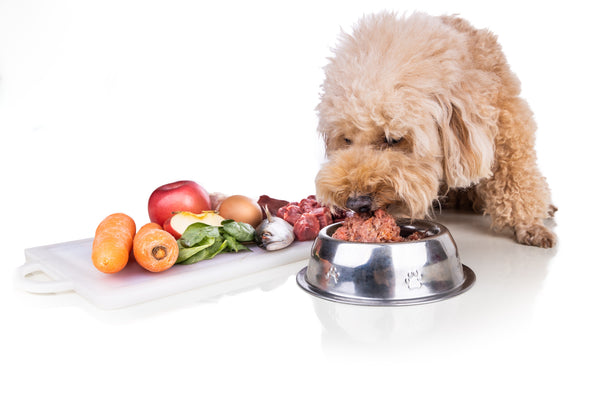
Choosing the Right Ingredients
Bowl building begins with selecting high-quality ingredients.
Here's a breakdown of what to look for:
Protein Sources
Protein is crucial for muscle development and a host of metabolic functions. Opt for sources that your pet can easily digest, such as chicken, turkey, or fish. Considerations like the amino acid profile and bioavailability are also important, ensuring that your dog or pet can derive the full benefits from the protein source provided.
Benefits of Protein for Pets:
- Repair and maintenance of body tissues
- Enhanced immune system function
- Energy production
Carbohydrates
Contrary to the popular belief that cats and dogs do not require carbohydrates, these nutrients are vital for providing energy and can also contribute to fiber intake. Quality carbohydrates include sweet potatoes, brown rice, and other whole grains.
Benefits of Carbohydrates for Pets:
- Slow-release of energy
- Improved digestion and gut health
Fats and Oils
Essential fatty acids are critical for a healthy coat, cognitive function, and support of organ health. Options like fish oil are an excellent source of omega-3, while safflower and flaxseed oils can be included to balance the omega-6 to omega-3 ratios.
Benefits of Healthy Fats for Pets:
- Promotes healthy brain and nerve function
- Supports a shiny, healthy coat
- Regulates metabolism and hormone production
Vitamins and Minerals
The right blend of vitamins and minerals is essential for overall health. Ensure that your bowl includes a spectrum of these nutrients, especially if your pet's diet is homemade or lacks complete commercial blends.
Benefits of Vitamins and Minerals for Pets:
- Regulates bodily functions
- Supports immune system function
- Essential for healthy growth and development
How Can I Choose the Freshest Ingredients?
When selecting ingredients for your pet's meals, it's important to choose the freshest and highest-quality options.
Here are some tips to help you identify fresh ingredients:
- Look for vibrant color: Fresh fruits and vegetables should have a bright and vibrant color. Faded or dull colors can indicate that the produce is not fresh.
- Check for firmness: Fruits and vegetables should feel firm to the touch, indicating that they are ripe and fresh. Avoid produce that is soft or mushy.
- Inspect for mold or bruising: Any signs of mold or bruises on fruits and vegetables indicate that they are no longer fresh and can potentially be harmful to your pet's health.
- Read labels on packaged products: When choosing packaged ingredients, read the label carefully to ensure that there are no added preservatives or artificial ingredients.
- Buy from reputable sources: It's important to buy ingredients from trusted sources, such as local farms or reputable pet food companies.
Are There Any Ingredients I Should Watch Out for?
While most ingredients are safe for pets, there are a few that should be avoided or used in moderation.
These include:
- Onions and garlic
- Grapes and raisins
- Xylitol (found in sugar-free products)
- Chocolate
Always check with your veterinarian before adding any new ingredients to your pet's diet.

Special Considerations
Just like humans, pets can have specific dietary needs. Understanding and accommodating these requirements is vital for bowl-building success.
Dietary Restrictions
Some pets require more specialized diets due to health conditions. For example, animals with kidney disease may need a diet low in certain nutrients. Always consult with a veterinarian to address and manage any dietary restrictions.
Allergies and Sensitivities
Food allergies and intolerances are common among pets. Symptoms like itching, digestive issues, or hair loss could indicate a problem ingredient. Keeping a food diary and working with a vet can help identify and eliminate these issues.
Age-Related Nutrition
As pets age, their nutritional needs change. Older animals may require more or less of certain nutrients to support their aging bodies. Consider adjusting your bowl-building approach as your pet enters different stages of life.
Breed-Specific Requirements
Certain breeds may have unique dietary requirements due to genetic factors or physical characteristics. For example, large breed dogs may need more joint support, while smaller breeds may require more delicate digestion. It's essential to research your pet's specific breed and consult with a vet to ensure their bowl-building plan meets their individual needs.
Building a Balanced Bowl
A balanced bowl provides the right proportion of nutrients. While there is no one-size-fits-all ratio, the general guidelines from the Association of American Feed Control Officials (AAFCO) are a valuable starting point.
Proportion Guidelines
A well-balanced bowl typically consists of 30-40% protein, 30-40% vegetables, and 10-30% carbohydrates. The remaining percentage is filled with fats and oils, which are also high in calories.
Mixing Techniques
Balance isn't just about the proportions; it's also about how the food is combined. For instance, combining grains and legumes can provide a complete protein profile, while adding some fat can improve the absorption of fat-soluble vitamins.
Vitamins and Minerals to Consider
A balanced bowl should provide most of the essential vitamins and minerals. However, some may require additional supplements for optimal health.
Probiotics and Prebiotics
These are beneficial bacteria that support a healthy gut microbiome. Adding probiotic-rich foods like yogurt or kefir can help regulate digestion.
Probiotics
Probiotics are live microorganisms that help maintain a healthy balance of good and bad bacteria in the digestive tract. They can also improve immune function and aid in nutrient absorption.
Prebiotics
Prebiotics are fibers that serve as food for probiotics, promoting their growth and activity in the gut. Foods such as bananas, apples, and oats are excellent sources of prebiotics.
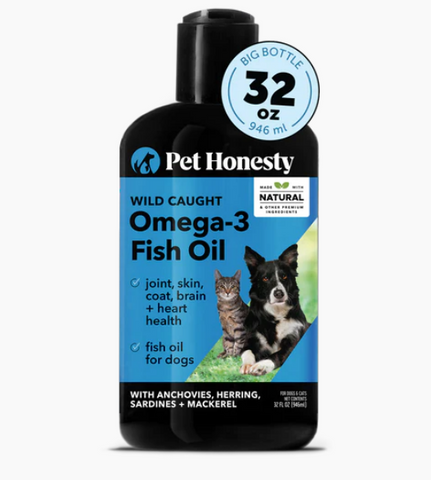
Omega-3 Fatty Acids
As mentioned earlier, omega-3 fatty acids play a crucial role in maintaining a healthy coat, brain function, and overall wellness. Adding a fish oil supplement or incorporating fatty fish like salmon or sardines into your pet's diet can ensure they receive enough of these essential fats.
Calcium and Phosphorus
Bone health is largely dependent on these minerals. Ensure that your pet's bowl has these in the right balance, as an imbalance can lead to skeletal issues.
Calcium
Calcium is vital for strong bones and teeth, muscle function, and nerve transmission. Calcium-rich foods include dairy products, leafy greens, and bone meal.
Phosphorus
Phosphorus works with calcium to maintain bone health and plays a role in energy production. Good sources of phosphorus are poultry, fish, and whole grains.
Antioxidants
Antioxidants like vitamins A, C, and E help protect cells from damage caused by free radicals. They also support a healthy immune system and promote healthy aging.
Vitamin A
Vitamin A promotes healthy eyesight and immune function. Good sources include carrots, sweet potatoes, and liver.
Vitamin C
Vitamin C is essential for collagen production, wound healing, and immune function. Fruits like oranges and strawberries are rich in vitamin C.
Vitamin E
Vitamin E supports skin health and helps protect cells from damage. It can be found in almonds, sunflower seeds, and spinach.
Selenium
Selenium is another antioxidant that supports immune function and thyroid health. Foods like beef, chicken, and eggs are good sources of selenium.
Zinc
Zinc plays a role in immune function, skin and coat health, and wound healing. Foods like beef, poultry, and pumpkin seeds are rich in zinc.
Amino Acids and Why They Matter
Amino acids are the building blocks of protein, meaning they play a critical role in many bodily processes. There are essential and non-essential amino acids, with essential ones being those that cannot be produced by the body and must be obtained from food.
Taurine
Taurine is an essential amino acid for cats and plays a vital role in heart health, eye function, and reproductive health. Cats cannot produce enough taurine alone, making it crucial to include it in their diet.
Benefits of Taurine for Pets:
- Promotes heart health by regulating muscle contractions and maintaining healthy blood pressure levels
- Essential for eye function and can help prevent conditions like cataracts and retinal degeneration
Lysine
Lysine is another essential amino acid that plays a role in immune function, collagen production, and calcium absorption. It is also important for maintaining a healthy coat and skin.
Benefits of Lysine for Pets:
- Can help prevent and manage feline herpesvirus infections in cats
- Supports collagen production for healthy skin and coat
Arginine
Arginine is a non-essential amino acid that plays a crucial role in detoxification, wound healing, and immune function. However, it is considered essential for cats as they cannot produce enough of it on their own.
Benefits of Arginine for Pets:
- Supports the detoxification process in the liver
- Can aid in wound healing by promoting tissue repair and regeneration
Methionine
Methionine is an essential amino acid for dogs that supports skin and coat health, as well as liver function. It also helps regulate urinary pH levels and can benefit pets with bladder or kidney issues.
Benefits of Methionine for Pets:
- Promotes healthy skin and coat by supporting the production of keratin, a protein found in hair and nails
- Aids in the liver function by helping to detoxify harmful substances
- Can help regulate urinary pH levels, which can prevent or manage bladder or kidney issues
Histidine
Histidine is another essential amino acid for dogs that supports immune function and aids in histamine production, which can help alleviate allergies. It also plays a role in digestion and may benefit pets with digestive issues.
Benefits of Histidine for Pets:
- Supports immune function by promoting the production of white blood cells
- Can help alleviate allergy symptoms by aiding in histamine production
- Aids in digestion and may benefit pets with digestive issues
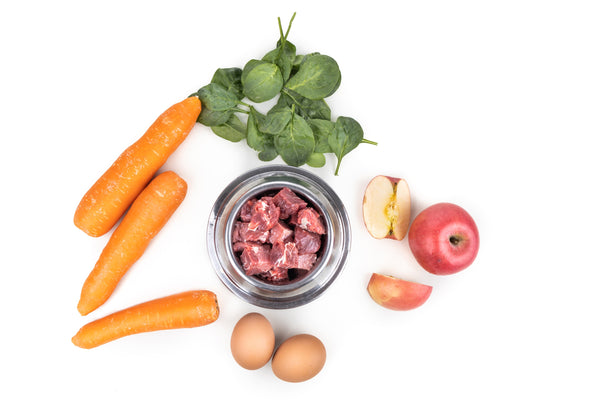
How to Bowl Build Step-by-Step
Start with a Base of High-Quality Protein
Selecting a high-quality protein source such as lean chicken, beef, or fish is crucial as the foundation of your pet's bowl. This component should ideally constitute around 30-40% of the bowl, ensuring your furry friend receives the necessary nutrients for optimal health and well-being.
Add in Non-Starchy Vegetables
Non-starchy vegetables, including nutrient-rich leafy greens like spinach, kale, and vibrant carrots, can be excellent sources of essential vitamins and minerals. They offer a plethora of health benefits while being low in calories, making them a smart choice to incorporate into your pet's diet.
Aim to include a generous portion of these veggies, making up around 30-40% of your pet's bowl, to boost the nutritional value of their meal.
Include Some Healthy Fats
Incorporating a small amount of healthy fats, such as coconut oil or salmon, into your pet's diet can significantly enhance nutrient absorption and supply crucial fatty acids. This dietary component, ideally constituting around 10-15% of your pet's meal, plays a vital role in supporting overall health and well-being.
Include a Source of Healthy Whole Grains
If your pet tolerates grains well and you want to diversify their diet, consider incorporating a small amount of healthy whole grains, such as brown rice or quinoa. These grains can provide additional fiber and nutrients to support your pet's overall health. Aim for grains to make up about 10-15% of their bowl to ensure a balanced meal.
Top off with Supplements and Extras
Make sure you include any essential supplements or extras in your pet's diet. This may encompass probiotics for gut health, prebiotics to support digestion, omega-3 fatty acids for a healthy coat and immune system, as well as antioxidants for overall well-being. Tailoring these additions to your pet's specific requirements can help promote their optimal health and vitality.
Adjust Portions and Ingredients as Needed
Make sure to keep a close eye on your pet's weight by regularly monitoring it and adjusting their food portions accordingly. It's also a good idea to seek advice from a veterinarian or a veterinary nutritionist to make certain that your pet's diet is tailored to meet all of its specific nutritional requirements. Your furry friend's well-being is worth the extra care and attention!
What Does a Properly Built Bowl Look Like?
A properly built bowl should incorporate a balance of essential macronutrients, such as high-quality protein, non-starchy vegetables, healthy fats, and whole grains (if tolerated). It should also include any necessary supplements or extras to support your pet's overall health and well-being. The portions of each component may vary depending on your pet's specific needs and dietary preferences.
Recommended Products
When bowl-building, the right supplements can fill in the nutritional gaps and support specific health needs. For instance, Pet Honesty’s Hip + Joint Health Supplements for dogs and cats are great for older pets or breeds prone to joint issues. Skin Health Salmon Supplements can help maintain a lustrous coat, and Probiotics for dogs and cats support a healthy gut.
What Supplements Are Best Suited for Senior Dogs?
Senior dogs may benefit from supplements that support joint health, such as glucosamine and chondroitin for arthritis or mobility issues. Omega-3 fatty acids can also help with brain function and cognitive decline in older pets. Probiotics are also beneficial for senior pets to promote a healthy gut microbiome, which can aid in digestion and nutrient absorption.
What Supplements Are Best Suited for Senior Cats?
Senior cats may benefit from supplements that support joint health, as well as those that promote brain function and cognitive health. Omega-3 fatty acids can help with both of these aspects, while probiotics can support a healthy gut microbiome to aid in digestion. Antioxidants may also be beneficial for senior cats to protect against cellular damage.
What Supplements Are Best for Kittens?
Kittens have unique nutritional needs, so it's essential to choose supplements that support their growth and development. Supplements with high-quality protein sources and essential vitamins and minerals can help ensure proper muscle, bone, and organ development. Probiotics may also be beneficial for promoting a healthy gut microbiome in young kittens.
What Supplements Are Best For Puppies?
Puppies also have specific nutritional needs, especially during their growth and development stages. Supplements that promote healthy joints, such as glucosamine and chondroitin, can help support their rapidly growing bones and prevent joint issues in the future. Omega-3 fatty acids are also crucial for brain development in puppies, while probiotics can aid in digestion and immune function.
What Supplements Are Recommended for Overall Health and Wellness?
For overall health and wellness in pets, supplements that provide a balance of essential vitamins, minerals, and fatty acids can be beneficial. Omega-3 fatty acids aid in immune function and promote a healthy coat, while antioxidants help protect against cellular damage. Probiotics can also support digestive health, which is crucial for maintaining overall well-being.

What Supplements Are Best for Pets with Allergies?
For dogs with allergies, supplements that can support a healthy immune system, such as omega-3 fatty acids and antioxidants, may be beneficial. Probiotics can also help reduce inflammation and promote a balanced immune response. Additionally, supplements containing ingredients like quercetin and bromelain may help alleviate allergy symptoms.
Some Mistakes Owners Make with Bowl Building
Not Considering Your Pet's Specific Nutritional Needs
It's important to keep in mind that every pet is unique and has their own specific nutritional requirements. That’s why it’s vital to consult with a veterinarian or veterinary nutritionist if you want to make sure your cat or dog's food bowl includes all the necessary nutrients for optimal health.
Overfeeding or Underfeeding
Portion control is also crucial when it comes to bowl building. Overfeeding can lead to weight gain and related health issues, while underfeeding can result in nutrient deficiencies and malnutrition. The best way to ensure your pet is receiving the right amount of food is by regularly monitoring their weight and adjusting portions accordingly.
Not Using High-Quality Ingredients
The quality of ingredients used in your pet's bowl is vital for their overall health and well-being. Low-quality ingredients can leave your pet feeling unsatisfied, leading to overeating or nutritional deficiencies. Always opt for high-quality, whole-food ingredients when bowl-building.
Not Including Supplements
Supplements are an essential part of a balanced pet's diet as they fill in any nutritional gaps and support specific health needs. It's crucial to include recommended supplements to ensure your pet gets all the necessary nutrients for optimal health.
Top Bowl Building Ingredients for Dog Food
- Lean proteins such as chicken, beef, or fish
- Non-starchy vegetables like spinach, carrots, and broccoli
- Healthy fats like coconut oil or salmon
- Whole grains such as brown rice or quinoa (if tolerated)
- Essential supplements like probiotics, prebiotics, and omega-3 fatty acids
Top Bowl Building Ingredients for Cat Food
- High-quality proteins such as chicken, turkey, or fish
- Nutrient-rich vegetables like pumpkin, peas, and sweet potatoes
- Essential fatty acids from sources such as fish oil or algae
- Probiotics for gut health and immune support
- Antioxidants for overall well-being
FAQs
Q: Can I bowl build for my senior pet?
A: Absolutely! Bowl building can be a great option for senior pets as you have control over the ingredients and can tailor their meals to meet their specific needs. It's always best to consult with a veterinarian to ensure your older pet is receiving all the necessary nutrients.
Q: Is bowl building more expensive than buying commercial pet food?
A: It depends on the ingredients you choose. But, in general, high-quality commercial pet foods can be quite pricey. Bowl building allows you to control the quality and quantity of the ingredients used, potentially making it a more cost-effective option in the long run.
Q: Can I bowl build for my pet if they have allergies?
A: Building your own bowl can be a great option for pets with allergies since you can choose the ingredients. Just make sure to avoid any allergens and consult with a veterinarian or veterinary nutritionist for guidance on creating a balanced meal plan for your pet.
Q: Can I bowl build for my overweight pet?
A: Yes, bowl building can be a great option for pet obesity prevention, as it allows you to control the portion sizes and ingredients used. Consult with a veterinarian to create a meal plan tailored to your pet's specific needs.
Q: Is it safe to include raw meat in my pet's bowl?
A: It's generally safe to include raw meat in your pet's diet, but it's still important to handle and store it properly to prevent any potential bacterial contamination. Consult with a veterinarian for recommendations on how much raw meat to include in your pet's meals.
Q: Can I bowl build for my picky eater?
A: Bowl building can be a great option for picky eaters because it gives you control over the ingredients and can tailor them to your pet's preferences. Experiment with different combinations until you find one that your pet enjoys.
Q: Are there specific guidelines for bowl building?
A: While there are no strict rules, it's essential to ensure a balance of protein, vegetables, healthy fats, and supplements in your pet's meals. Consult with a veterinarian or veterinary nutritionist for guidance on creating a balanced bowl.

Q: Can I include bones in my pet's bowl?
A: It is generally not recommended to include bones in your pet's bowl because they can pose a choking hazard or cause intestinal blockages. Instead, opt for bone broth or calcium supplements to provide your pet with the necessary minerals.
Q: Is bowl building suitable for all pets?
A: Bowl building can be suitable for most pets, but it's always best to consult with a veterinarian before making any significant changes to your pet's diet. Some pets may have specific dietary requirements that need to be considered.
Q: Can I use leftovers in my pet's bowl?
A: Leftovers can be used in your pet's bowl as long as they are safe and healthy for them to consume. Avoid using any foods that are toxic or high in fat, salt, or spices.
Q: How often should I change up my pet's bowl?
A: It's a good idea to switch up your pet's bowl every few weeks to provide them with a variety of nutrients and flavors. Consult with a veterinarian for recommendations on how often you should make changes.
Q: Is it okay to add fruits to my pet's bowl?
A: Some fruits can be safe and healthy for pets in moderation, such as berries and apples. However, it's essential to avoid any toxic fruits. Furthermore, you should consult with a veterinarian or veterinary nutritionist before including them in your pet's diet.
Q: Will my pet still get all the necessary nutrients through bowl building?
A: If done correctly, bowl building can provide all the necessary nutrients for your pet. Consult with a veterinarian or veterinary nutritionist to ensure you are incorporating all the essential vitamins, minerals, and supplements in your pet's meals.
Q: Can I bowl build for my active dog?
A: Yes, bowl building can be a great option for active dogs because you can tailor their meals to meet their high-energy needs. Consult with a veterinarian for recommendations on protein and healthy fat sources to include in your pet's bowl.
Q: How should I store my pet's homemade meals?
A: It's essential to store your pet's homemade meals in an airtight container in the refrigerator or freezer, depending on how soon you plan to use them. Follow food safety guidelines to prevent any potential bacterial contamination.
Q: Can I mix homemade and commercial pet food in my pet's bowl?
A: We generally don’t recommend mixing homemade and commercial pet food, since they have different nutritional profiles. Consult with a veterinarian or veterinary nutritionist for recommendations on creating a balanced meal plan for your pet.
Q: Is there a risk of nutrient deficiencies in bowl building?
A: If done incorrectly, there is a risk of nutrient deficiencies in bowl building. For that reason, it's essential to consult with a veterinarian or veterinary nutritionist and follow American feed control officials' specific guidelines for your pet's age, breed, and health conditions.
Q: How long should I wait before introducing new ingredients to my pet's bowl?
A: It's generally recommended to introduce new ingredients slowly over a week to monitor any potential allergic reactions or digestive issues. Consult with a veterinarian for recommendations on how quickly you can add new ingredients.
Q: Can I use supplements in my pet's bowl?
A: Supplements can be a great addition to your pet's bowl, but it's essential to consult with a veterinarian before adding any to ensure they are safe and necessary for your pet's health. Follow the dosing instructions carefully.
Q: Is it okay to include dairy in my pet's bowl?
A: Dairy can be safe for some pets in moderation, but it's essential to avoid any lactose-containing products as many pets are lactose intolerant. Consult with a veterinarian before including dairy in your pet's bowl.
Q: How can I make sure my pet is getting enough water through bowl building?
A: It's essential to provide your pet with fresh, clean water at all times, regardless of their diet. You can also incorporate moisture-rich ingredients into their bowl, such as bone broth or wet food, to ensure they are adequately hydrated.
Q: How can I ensure my pet is getting enough protein through bowl building?
A: Protein is a crucial component of your pet's diet, and it's essential to include high-quality sources in their meals. Consult with a veterinarian for recommendations on how much protein your pet needs based on their size, breed, and activity level.
Q: Can I bowl build for my pregnant or nursing pet?
A: Pregnant and nursing pets have higher nutritional requirements and may require special diets. Consult with a veterinarian for recommendations on how to adjust your pet's bowl during this time.
Conclusion
Bowl building can be a great way for pet parents to provide their furry friends with a balanced and customized diet. However, it's crucial to consult with a veterinarian or veterinary nutritionist before implementing any significant changes to your pet's meals. They can guide specific ingredients and nutrient requirements for your particular pet.
Remember to handle and store food properly, monitor your pet's weight and health, and make gradual adjustments to their diet. With proper care and consideration, bowl building can be a nutritious and enjoyable way to feed your pet. So, have fun experimenting with different combinations of ingredients and creating delicious meals for your furry friend!



